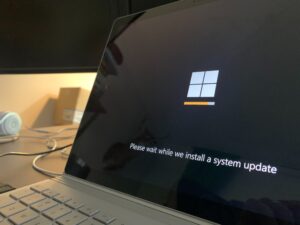 With data breaches and cyber threats on the rise, safeguarding your personal and sensitive information is paramount. One crucial aspect of cybersecurity, often overlooked, is software updates. You may be tempted to hit the “Remind Me Later” button when your device pings you with an update notification, but you should think twice before delaying them.
With data breaches and cyber threats on the rise, safeguarding your personal and sensitive information is paramount. One crucial aspect of cybersecurity, often overlooked, is software updates. You may be tempted to hit the “Remind Me Later” button when your device pings you with an update notification, but you should think twice before delaying them.
The digital landscape is constantly evolving, and so are the tactics employed by cybercriminals. They exploit vulnerabilities in software to gain unauthorized access to systems, steal information, or disrupt operations. Without regular updates, a system’s security can easily be compromised using known vulnerabilities. Regular software updates are the most effective way to ensure that systems are as secure as possible and reduce the risk of a data breach.
To keep your data safe, it’s imperative to install updates promptly. The following explores why software updates are vital and highlights the ways you can stay up to date.
Closing Vulnerabilities
Also known as patches or bug fixes, software updates are regularly released by developers to address security vulnerabilities and improve software performance. Once discovered, hackers often exploit these vulnerabilities to carry out malicious activities, such as ransomware, malware infections, or unauthorized data exfiltration. Bad actors are counting on the fact that not everyone keeps their software updated.
By neglecting these updates, you leave your systems and information vulnerable to attacks. Don’t make it easy for them — stay proactive and install updates as soon as they become available. In doing this, you are closing these vulnerabilities, making it harder for attackers to break through your defenses.
Enhancing Data Privacy
Software updates often include privacy enhancements to protect your personal information. These updates include encryption techniques to protect data, protocols to limit access to personal information, and systems to detect and respond to data breaches. In addition, updates often include tools to help users manage their privacy settings and delete their information when desired. Implement them, and you can be more confident that your privacy is respected.
User-Friendly Update Process
Software updates are designed to be user-friendly, with streamlined processes that minimize disruptions. Most updates can be automated or easily installed with a few clicks, making it easier for you to stay up to date with the latest version of the software and ensuring your experience is as smooth as possible. Take advantage of these simplified processes to keep your software and devices secure. You can also regularly check for updates manually to ensure you are always running the latest versions. Consider setting a recurring calendar reminder to complete this task.
Beware of End-of-Life (EOL) Software
End-of-life software refers to software that is no longer supported or maintained by developers. For example, earlier versions of Microsoft Windows, including Windows XP, are no longer supported by Microsoft. Continuing to use EOL software like this poses significant risks and can make you a prime target for cybercriminals due to the lack of security updates. Thus, it’s crucial to migrate to current software versions or alternatives to ensure ongoing protection of your data and systems. New software versions aren’t just nicer looking and more user friendly, they also contain important security improvements to protect your online presence.
Software updates should not be viewed as persistent notifications or time-consuming tasks. They are essential for safeguarding your information and protecting yourself from cyber threats. Take charge of your digital security by prioritizing software updates and following the above tips. By doing so, you strengthen your defenses against cyber threats and ensure the safety of your valuable data. Don’t wait — update now and stay one step ahead. Your data security is worth it.